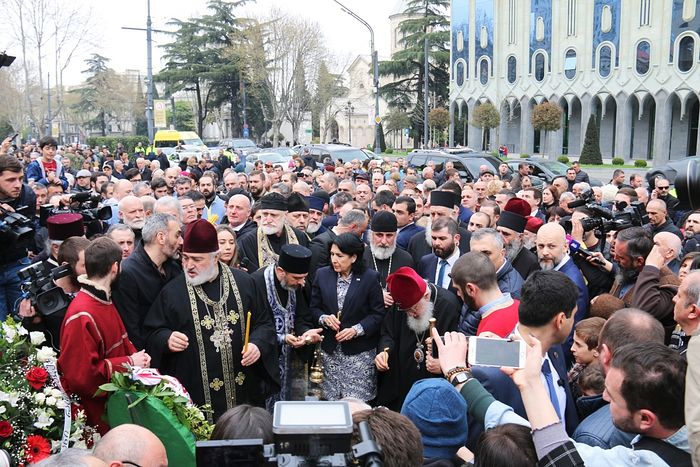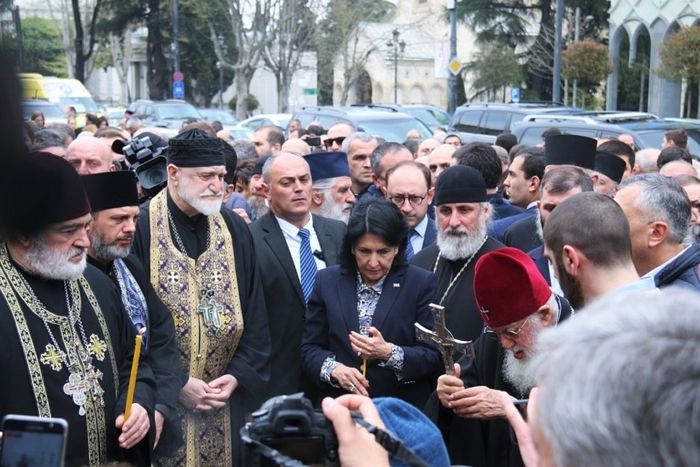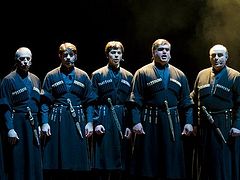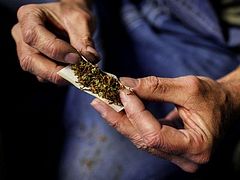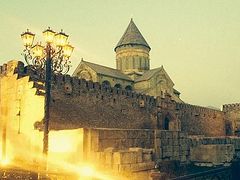Tbilisi, April 10, 2019
Georgia celebrates April 9 as the Day of National Unity, recalling the tragic events of April 9, 1989 that left 21 dead and hundreds wounded and which spurred a movement that led to the Supreme Council of the Republic of Georgia proclaiming its sovereignty and independence from the Soviet Union on April 9, 1991, the second anniversary of the tragedy.
The Tbilisi Massacred (also known as the Tbilisi Tragedy and the April 9 Tragedy) refers to the brutal dispersion of an anti-Soviet rally by Soviet troops. One of the victims was a 16-year-old girl who tried to get away from the advancing troops but was chased down and beaten to death near the steps of the government building. The tragedy fueled the anti-Soviet movement in Georgia, and on March 31, 1991, the people voted nearly unanimously to leave the Soviet Union, which the Supreme Council declared 9 days later.
In honor of those who were killed in 1989, His Holiness Catholicos-Patriarch Ilia II of Georgia visited the memorial on Rustaveli Avenue and served a panikhida for the repose of their souls, reports the site of the Georgian Orthodox Church.
President Salome Zuravishvili was also present at the event.
Recalling the night of the tragedy, His Holiness said, “I was asked to go and address the people. It was very difficult for me. I felt that the people wouldn’t listen to me,” in an interview with Imedi TV, reports Interpress News.
Pat. Ilia recalled that the people demonstrating were ready for freedom but also understood that they were on the brink of death.
“It’s very difficult to recall that night, what happened on Rustaveli. They came to me at midnight and said that Georgia was in danger. They asked me to go and address the people. It was very difficult for me. I felt that the people wouldn’t listen to me. I called on them to go to Kashveti [Church—O.C.]. I felt that they would refuse me, but I decided to stand with my people,” the Patriarch recalls.
“When I told them the danger is real, the people fell silent, and calmness reigned, and then they cried out, ‘No.’ It was readiness, the people felt they were on the brink of death and tanks were coming, but the young people surrounded me. They stood so that in the event of shooting, there would be a guard around me, so I wouldn’t get shot,” His Holiness said.
Pat. Ilia also noted that it is typical of the Georgian people to unite in the face of danger. “This characterizes us,” he said, according to Kavkaz Plus, “our people unite before danger; this trait is characteristic of the Georgian people.”
“Our people showed the enemy that we were not hostile. We couldn’t have imagined that they would so ruthlessly move on the people, and when I returned home, I went to Sioni Cathedral, and there were dead people there. It was hard to see,” the Patriarch recalled.
“It was amazing selflessness. It was a struggle for the future, for future freedom. We shouldn’t need so many sacrifices to unite. We should always be united; that is our fate. The Georgian people easily sacrifice themselves for the sake of their homeland and friends,” Pat. Ilia said, reflecting on the terrible tragedy.
Follow us on Facebook!

